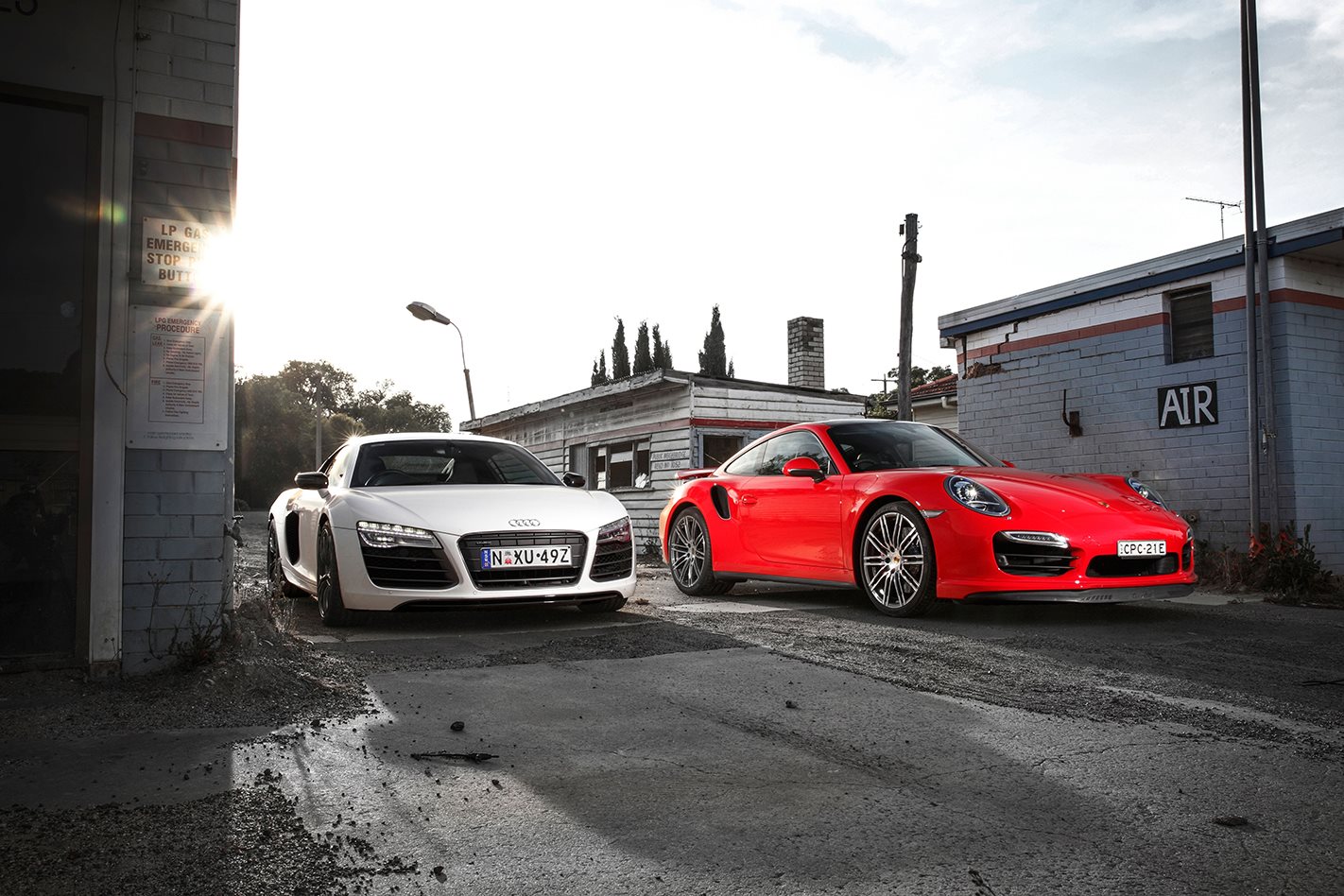A man must experience at least two things in his life: a 911 Turbo’s launch control, and the haunted animal of an engine that lives in the middle of an Audi R8 V10 Plus.
Say we plonked you in a 911 Turbo driver’s seat, throttle pinned under your right foot, 5600rpm summoned, staring down a straight bit of road, da-da-da-da-da on the rev limiter. Lift your left foot off the brake. There’s a pause for a nanosecond as the car prepares to smack you in the face with 383kW. Then boom.
As if jerked hard by giant rope, the Turbo explodes forward, front wheels spinning, squatting hard over its rear axle. For the first fraction of a second, it feels like all four wheels have leapt off the ground.
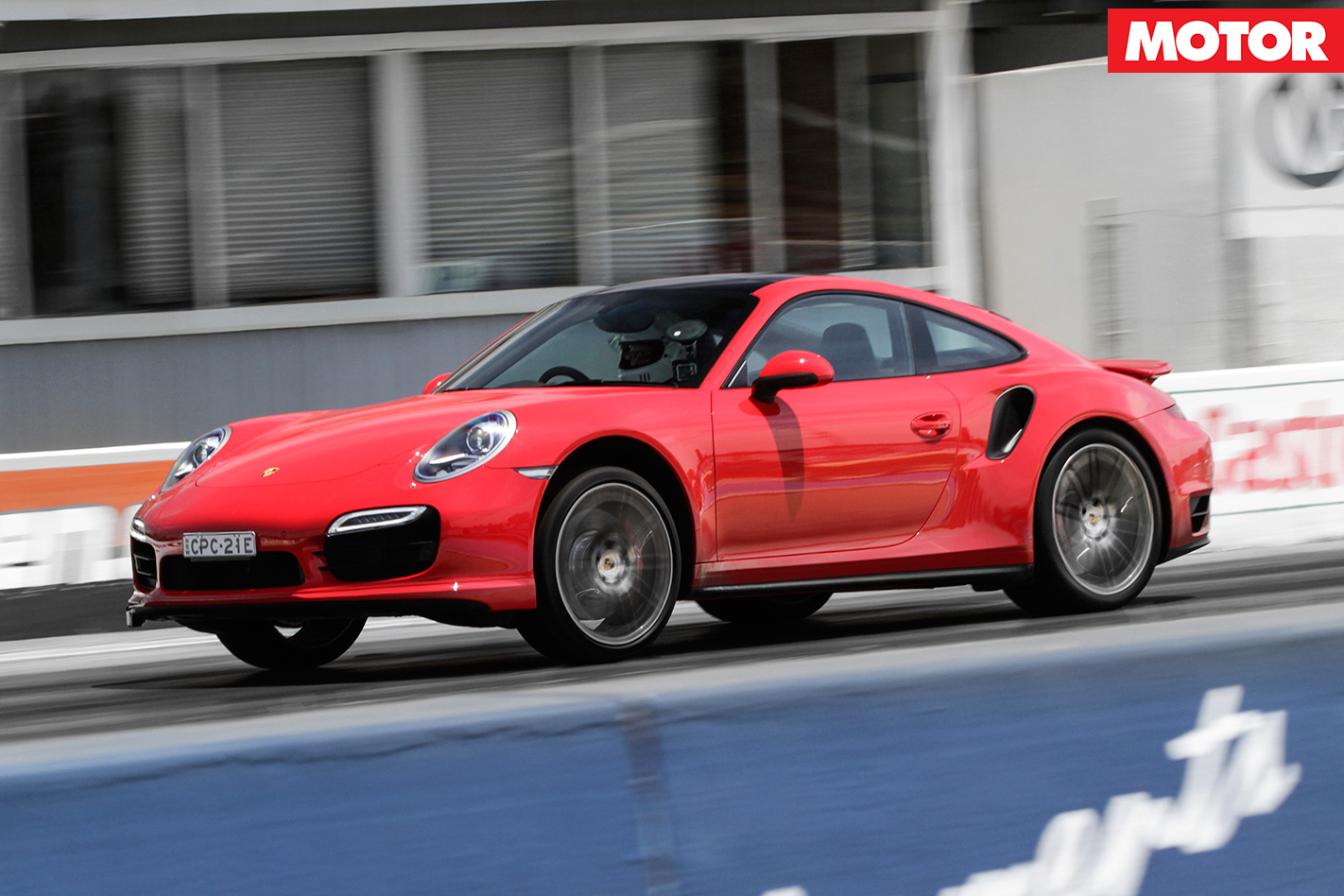
Keeping your foot in it, you’ll hit 100km/h in 3.07sec, 200km/h in 10.3sec. 0-400m is crushed in 10.98 seconds.
And at other speeds, it’s impossible to acclimatise yourself to the titanic thrust available under your right foot – 710Nm available from just 2100rpm. Full throttle is like igniting two enormous rocket boosters attached to the sides of the car.
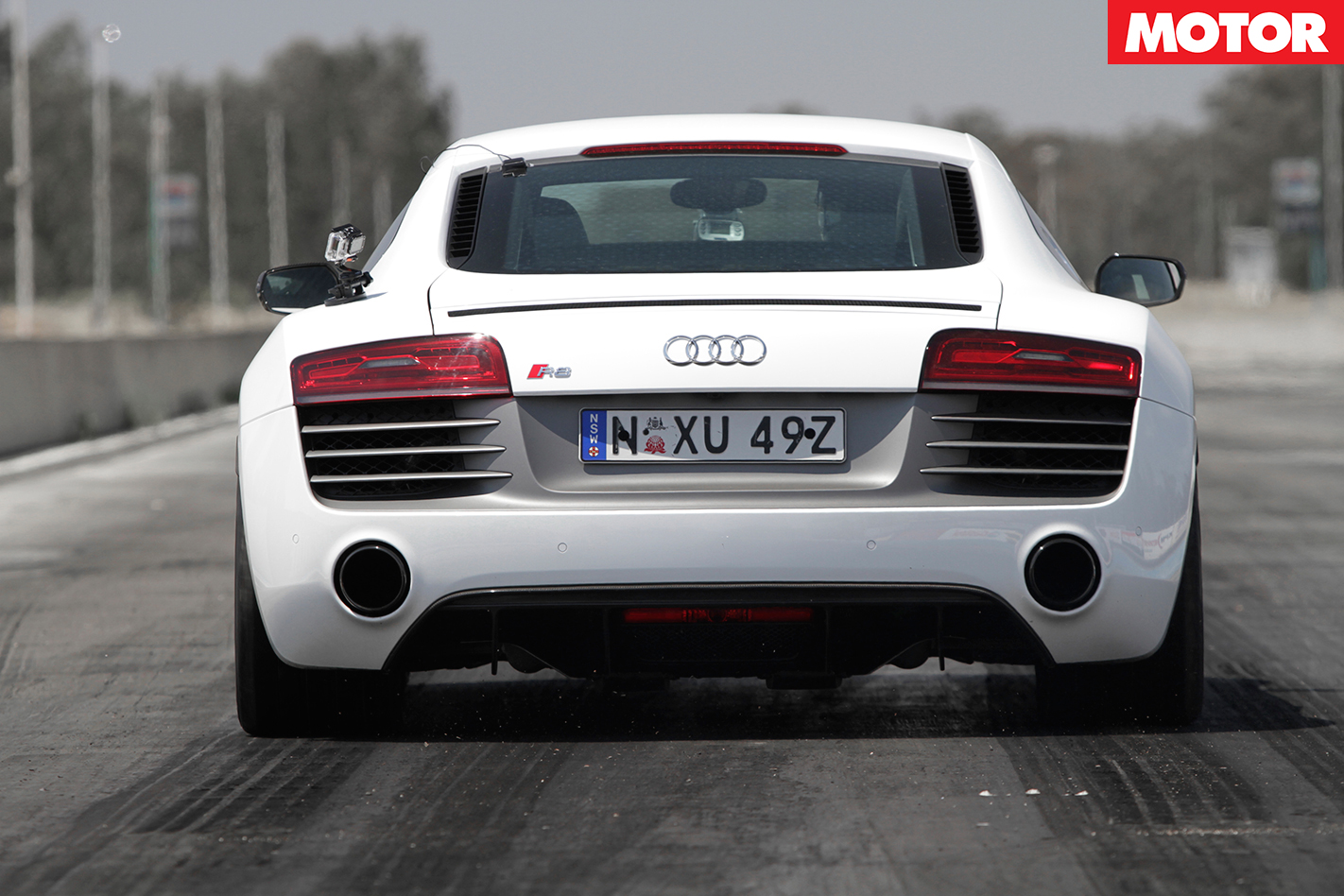
At Performance Car of the Year 2013, we were spellbound by the R8 V10 Plus and crowned it winner. Deservedly, too; it’s a nine-out-of-10 car, and we were all stunned by its 11.48sec quarter mile. The R8 is a hooligan.
The 911 Turbo makes it feel a bit, well, slow. We thought this might happen. At the PCOTY judges roundtable, we pondered the outcome if the new 911 Turbo or GT3 were there to challenge the R8.
Now the 911 Turbo is in Australia, we can explore this further. And can confirm first blood to the Turbo for acceleration.
Of course, it’s not all about, that, though. When it comes to cars, some of you like to attract attention like you’re cropdusting a busy footpath with $100 notes. Each to their own.
Though it’s now nine years old (!) the R8 looks as dramatic as the day it was unveiled. Parked next to it, the Porsche looks classier and understated. But don’t worry, attention-seekers – it still attracts eyeballs like it’s fluoro green, and on fire.
They’re both quite small cars, too, giving the illusion in photos that they’re bigger than they actually are. Pull open the R8’s angular door and you have to duck your head to fit through the low, small-ish opening.
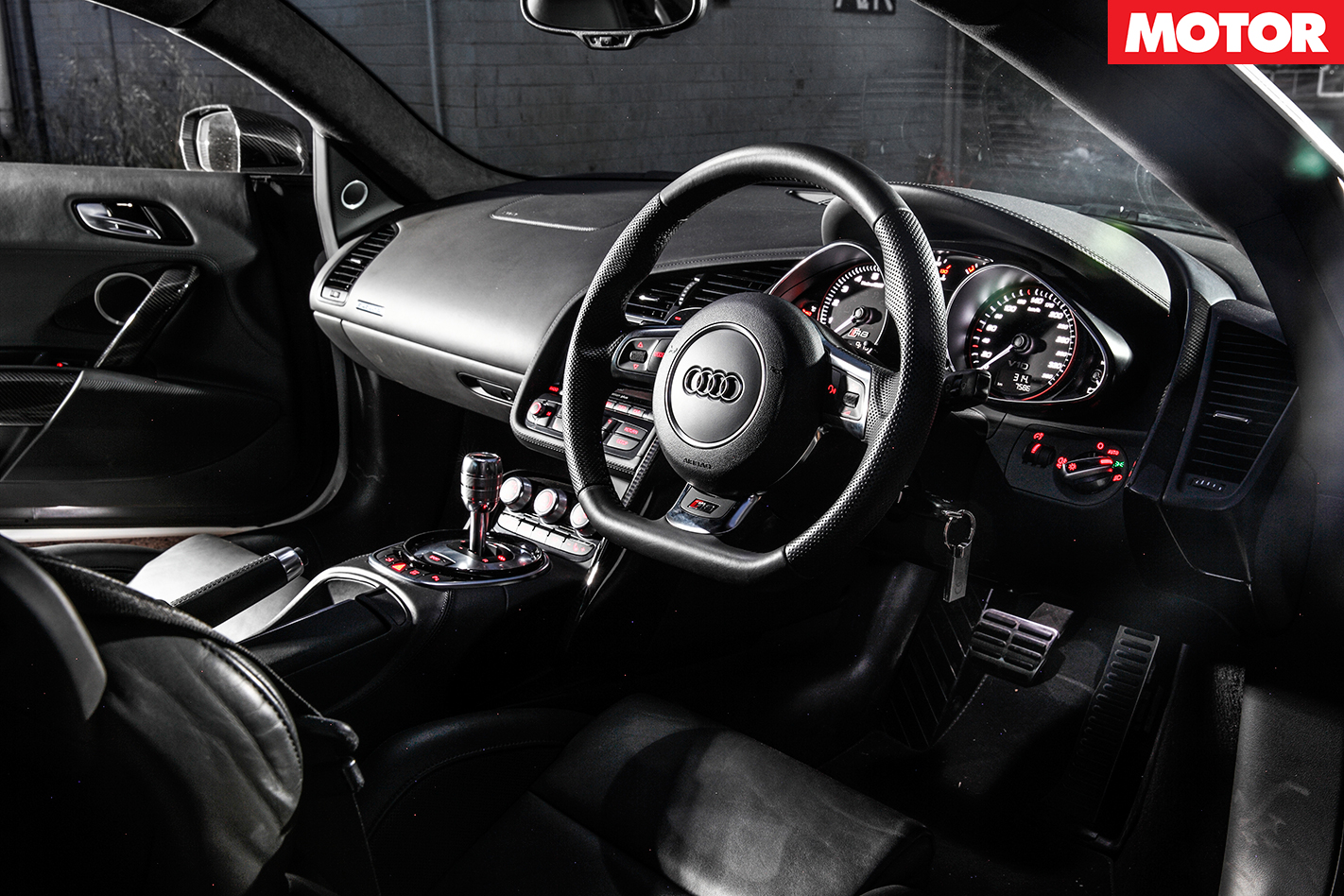
If the R8’s starter motor didn’t sound like the Terminator stirring his morning coffee, and if the engine didn’t idle like a sports bike whose balls have dropped, it would be rather unspectacular indeed.
Until you notice the R8’s dramatic gearknob, looking like it was flogged from the cockpit of the Millennium Falcon, a solid rod of an otherworldly metal, thick, heavy and cold, feeling tight, precise and mechanical as you grab Drive.
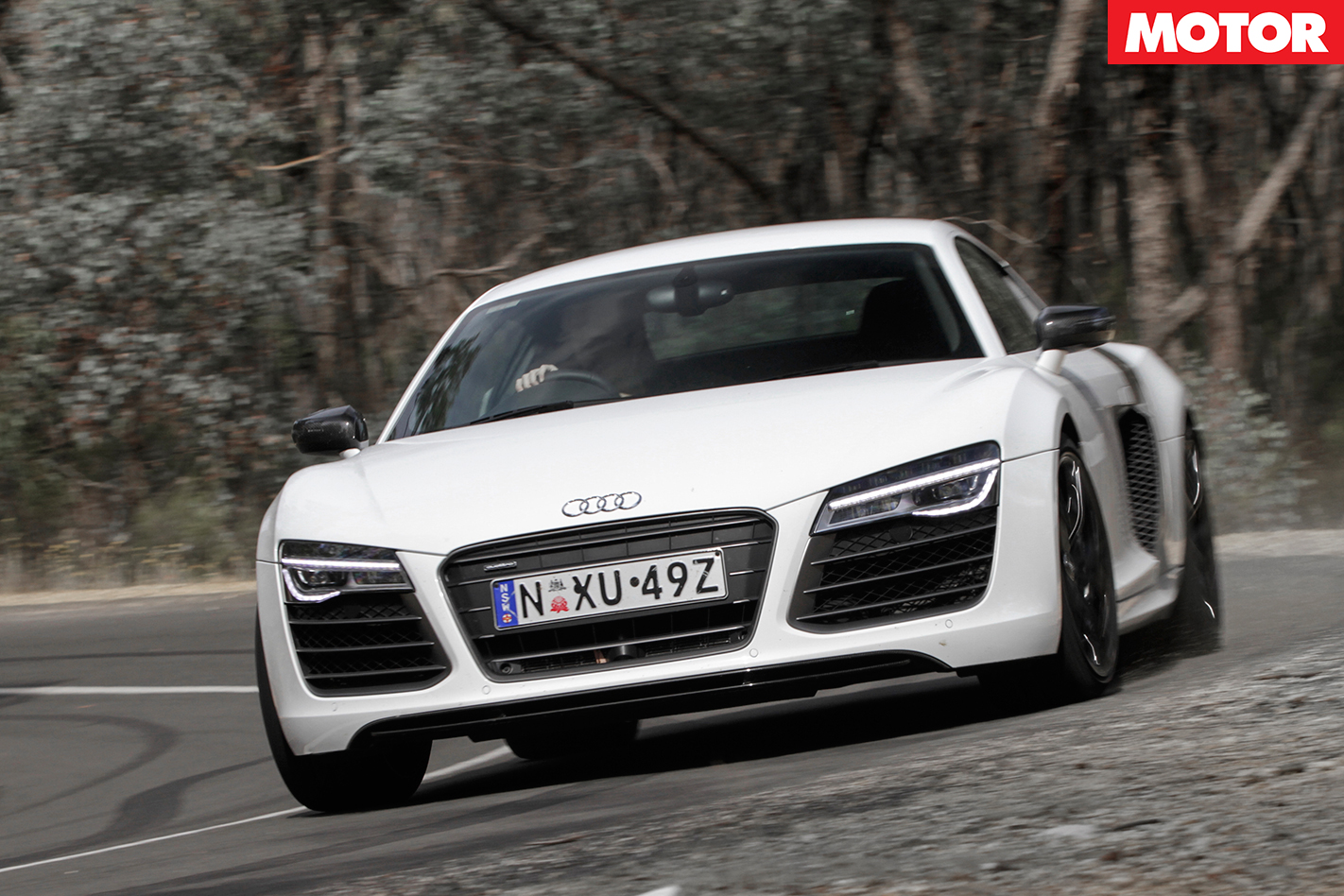
Pootling around town, though, the R8 is very behaved. While the damping rate is fixed (adaptive dampers are available on the standard R8 V10, but not the Plus) the ride isn’t shocking. The new S-tronic dual-clutch ’box is miles more pleasant than the clunky, cantankerous old R-tronic, too. And visibility is generous. Supercars shouldn’t be so easy to park.
Given the seats fit like corsets and are about as comfortable as sitting in a bodybuilder’s lap, you wouldn’t sanely commute to work in the R8, though, and only men with marbles rattling around in their heads would drive it long-distance.
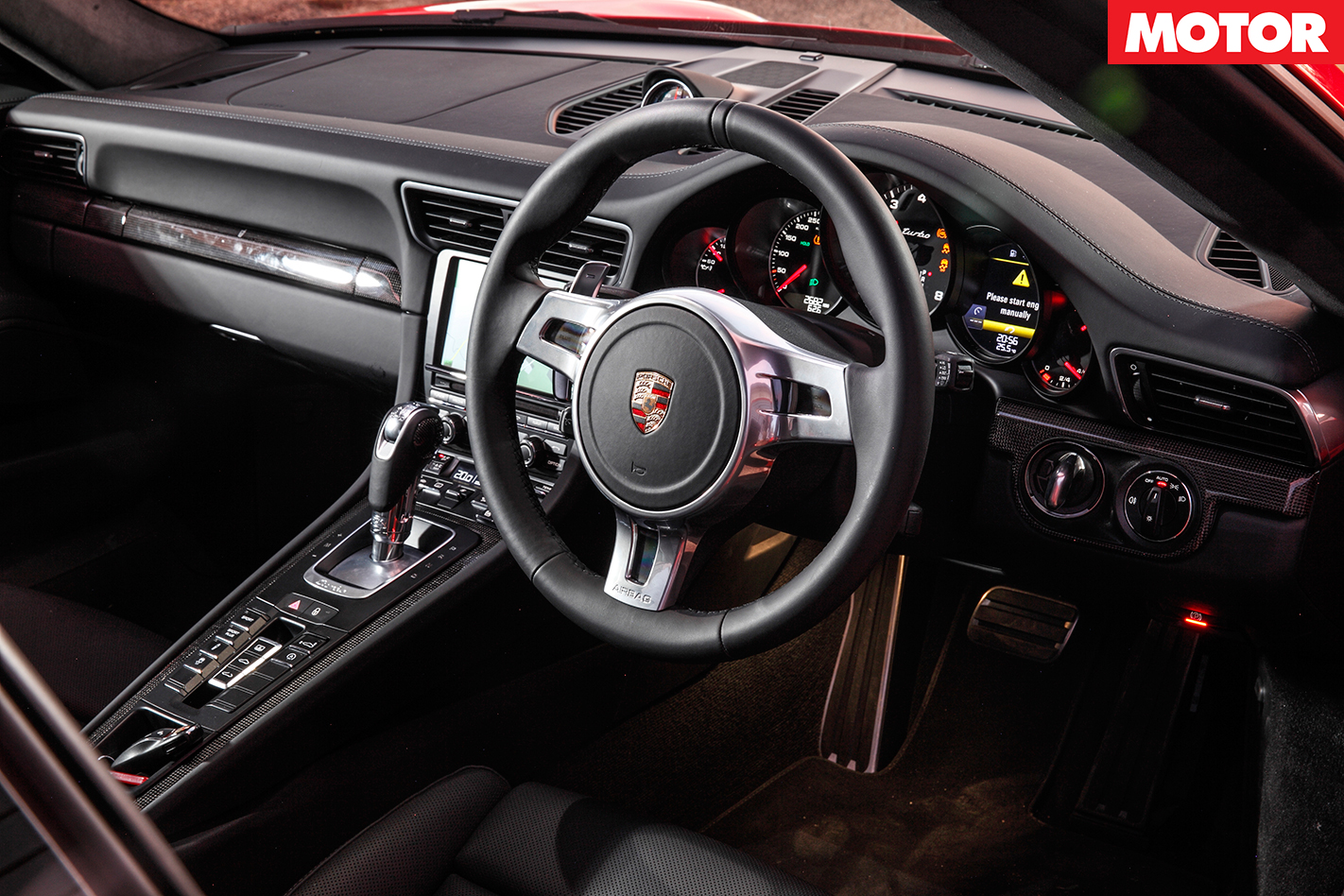
Owing to its youth, the 911 has more niceties like keyless entry (though no push-button start; there’s an unusual, key-like knob on the dash behind the steering wheel you turn to start the car). And it’s distinctive 911: tacho in ya face, steep dashboard, and a perfect driving position.
If someone dangled the keys to each in front of you and said drive from Sydney to Melbourne, you’d take the Porsche. But, if standing at the foot of a closed alpine road, a 911 Turbo and an R8 V10 Plus to choose from, you might chew through the whites of a few fingernails before arriving at a decision.
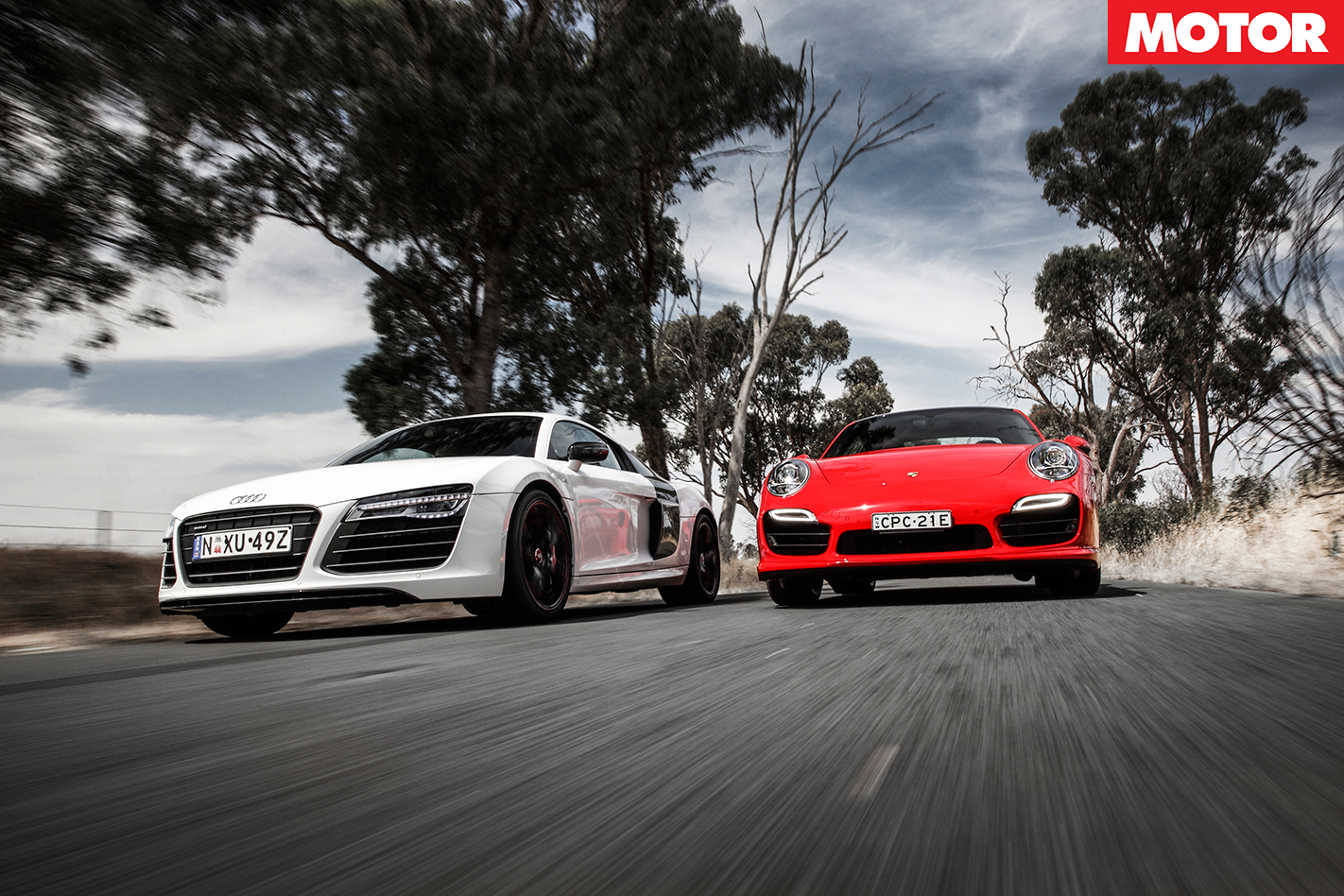
Bury the gas and the 911 bolts, mentally, on a seemingly ceaseless supply of low-down, turbo torque. Light turbo whistle transitions to a roaring, bassy hiss in the higher revs, where the flat-six starts to sing a little. You feel your hands tightening around the steering wheel. You have to pay attention. It’s effing fast.
The cornering speeds are berserk. It’s not until you start pushing that you realise there’s even more grip and ability than you first thought. Until then, though, you might be impressed by the Turbo’s pace, but you could be forgiven for craving a little more character and playfulness.
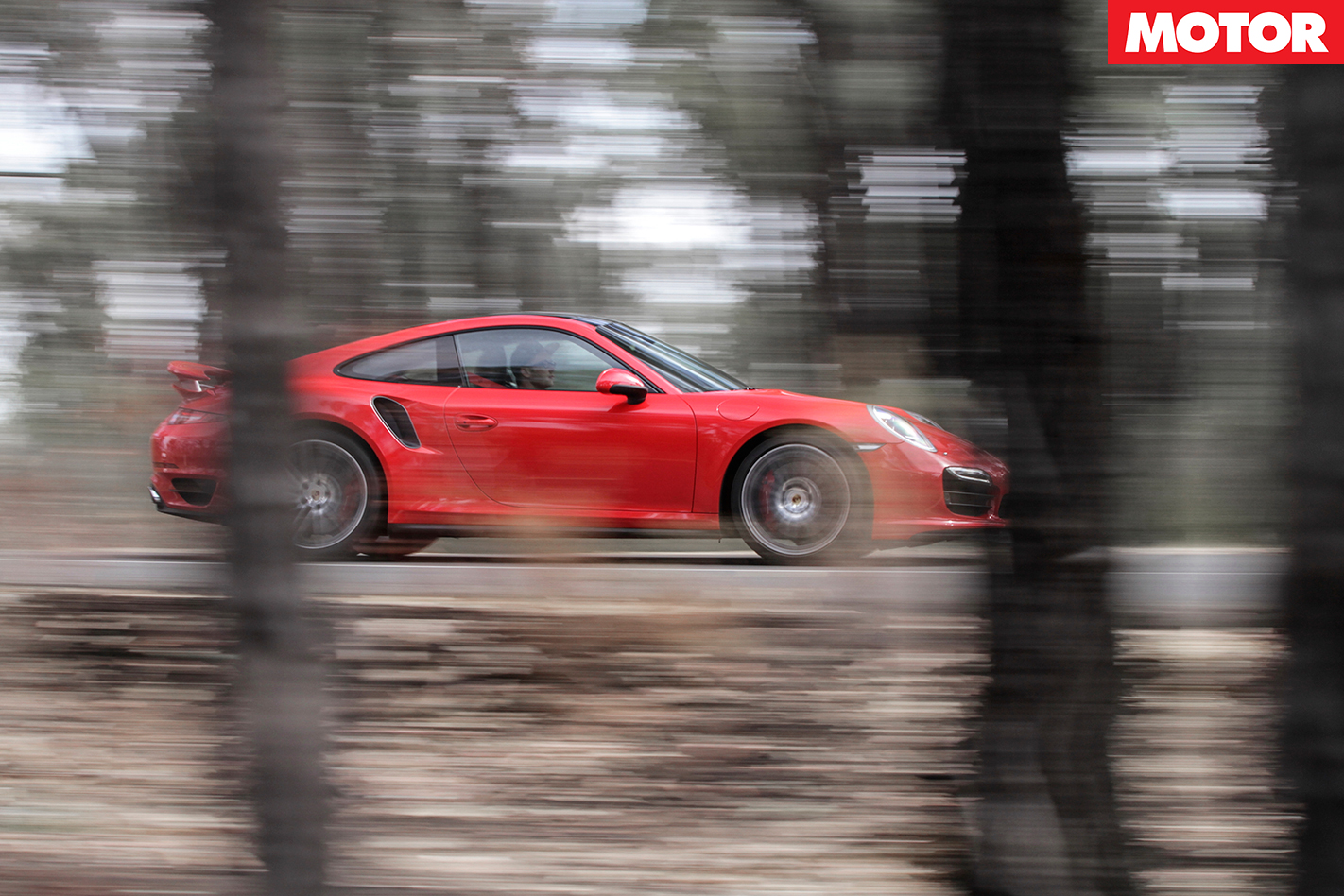
Then you get a bit of confidence and push harder. And you start to ‘get it’.
It’s tippy-toeing towards the limit, music off, tyres occasionally letting out a little squeal, that the 911 reveals its full talent – superbly balanced (you’d never think the engine is in the boot), mega amounts of grip, urging you to go faster and faster. Chassis-wise, it is a hugely gifted car.
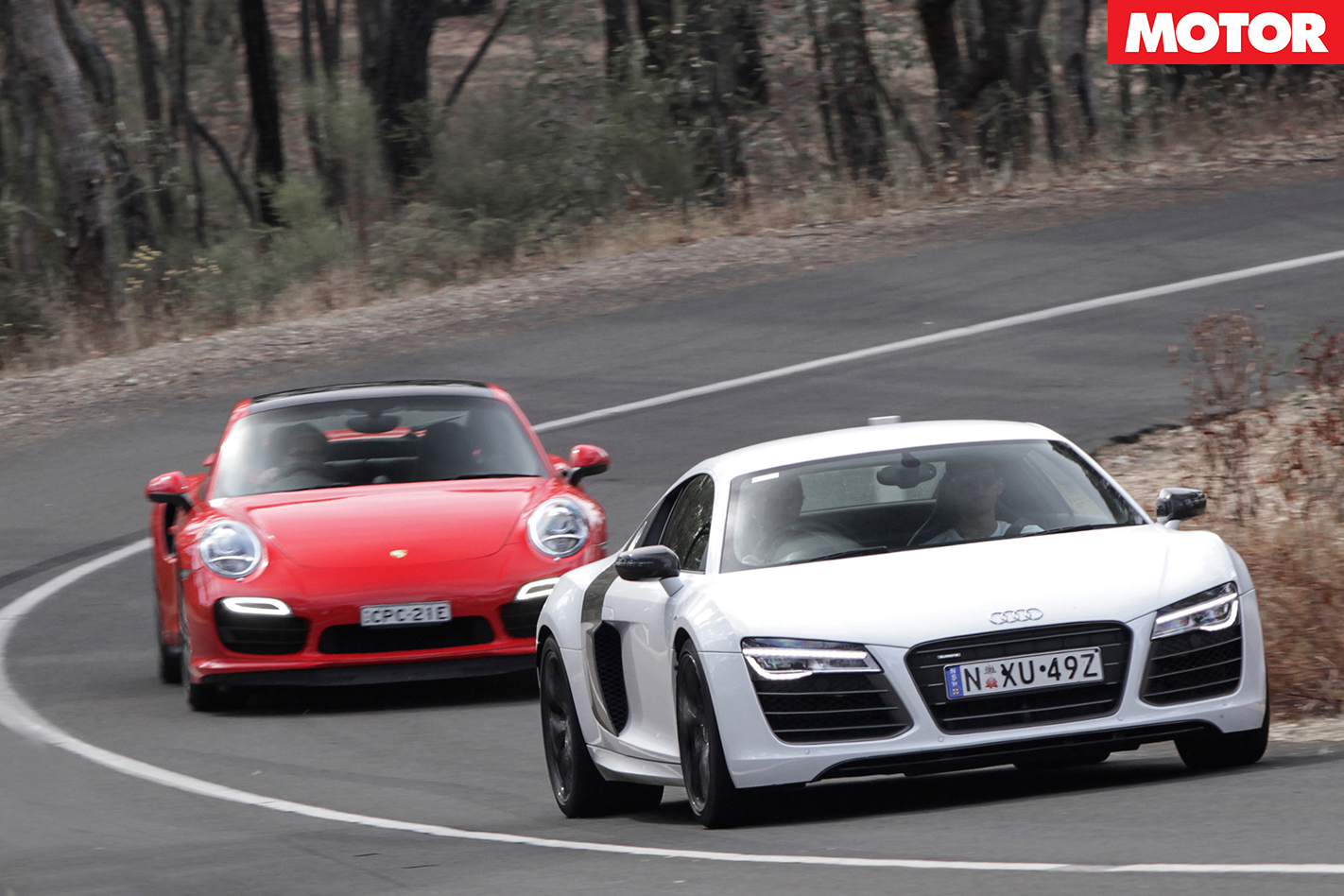
In the slow stuff, too, the 911 is unbeatable – you tip in and realise you could’ve gone a third faster. It pivots on its all-wheel steering like a hand reaching from the heavens, picking it up, turning it 90 degrees and plonking its spinning wheels back on the bitumen.
I’ve never driven a car that can carry so much speed into a hairpin – so capable of diving in and punching out of it again. You could never criticise the Turbo for a lack of grip.
But even at these speeds, the Turbo’s absolute limit is elusive. It’s like scaling a mountain for the first time – you think you’re near the top, but when you get close, the summit reveals itself to be another 300 metres away.

But while it’s superbly impressive, the 911 doesn’t have the supercar-drama of the R8. It sounds good, but you almost find yourself wishing there was a menu in the centre screen where you could turn the turbo roar down a bit and crank up the exhaust note. (Which is why Porsche makes the GT3, we suppose.)
In wanting it to be perfect, you might also find yourself yearning for just a tiny bit more feedback through the steering wheel. And perhaps more of a tactile pluck to the gear paddles. But that’s it.
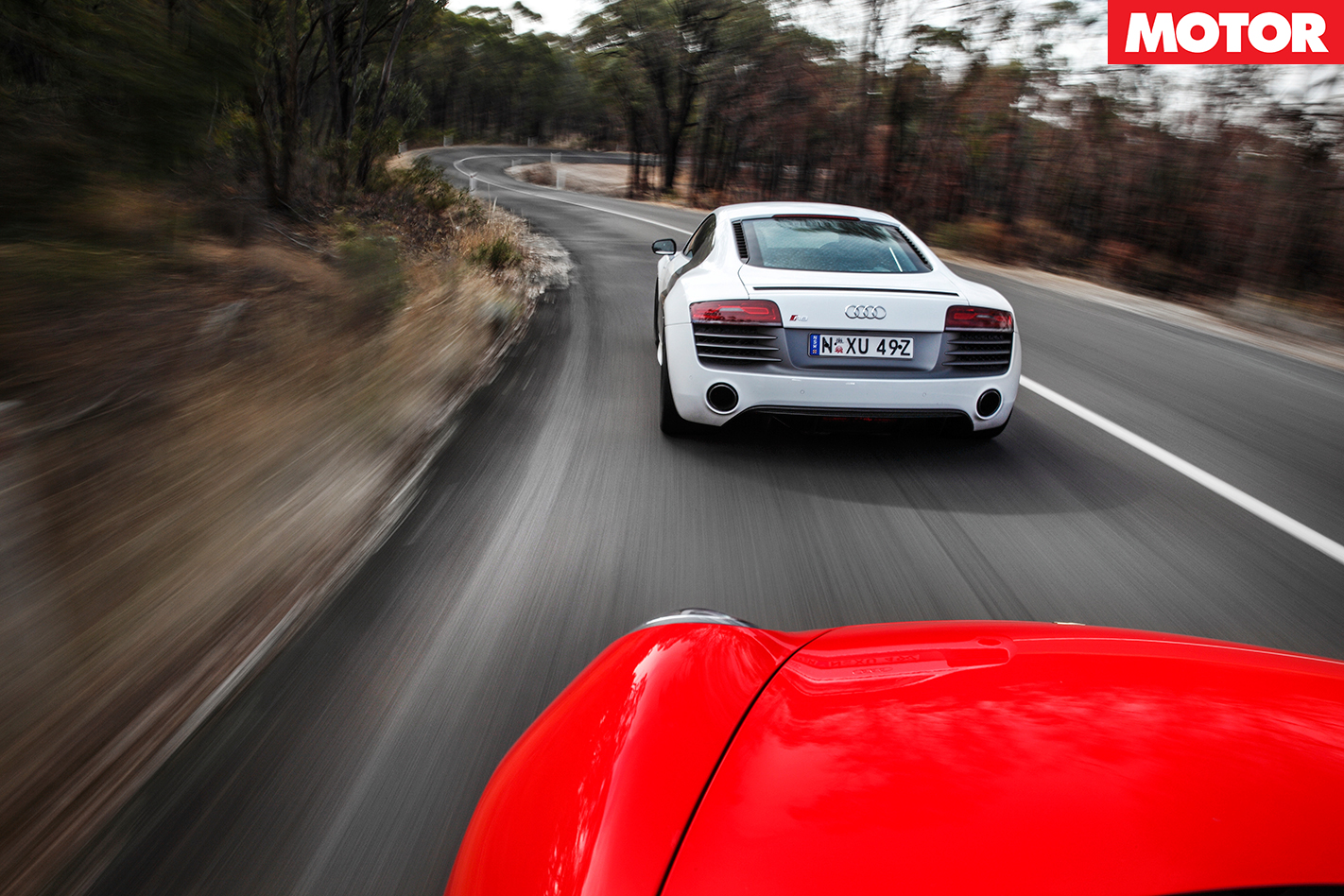
Particularly given it makes its perhaps modest 540Nm at a high 6500rpm. You certainly have to rev the R8 to get the most out of it compared to the Turbo. Not that that’s a bad thing.
The first time you floor the R8 and wind out that shrieking, clean-revving V10 to just shy of 9000rpm, and feel its howl vibrate through your bones, you’ll need to pull over and calm yourself down.
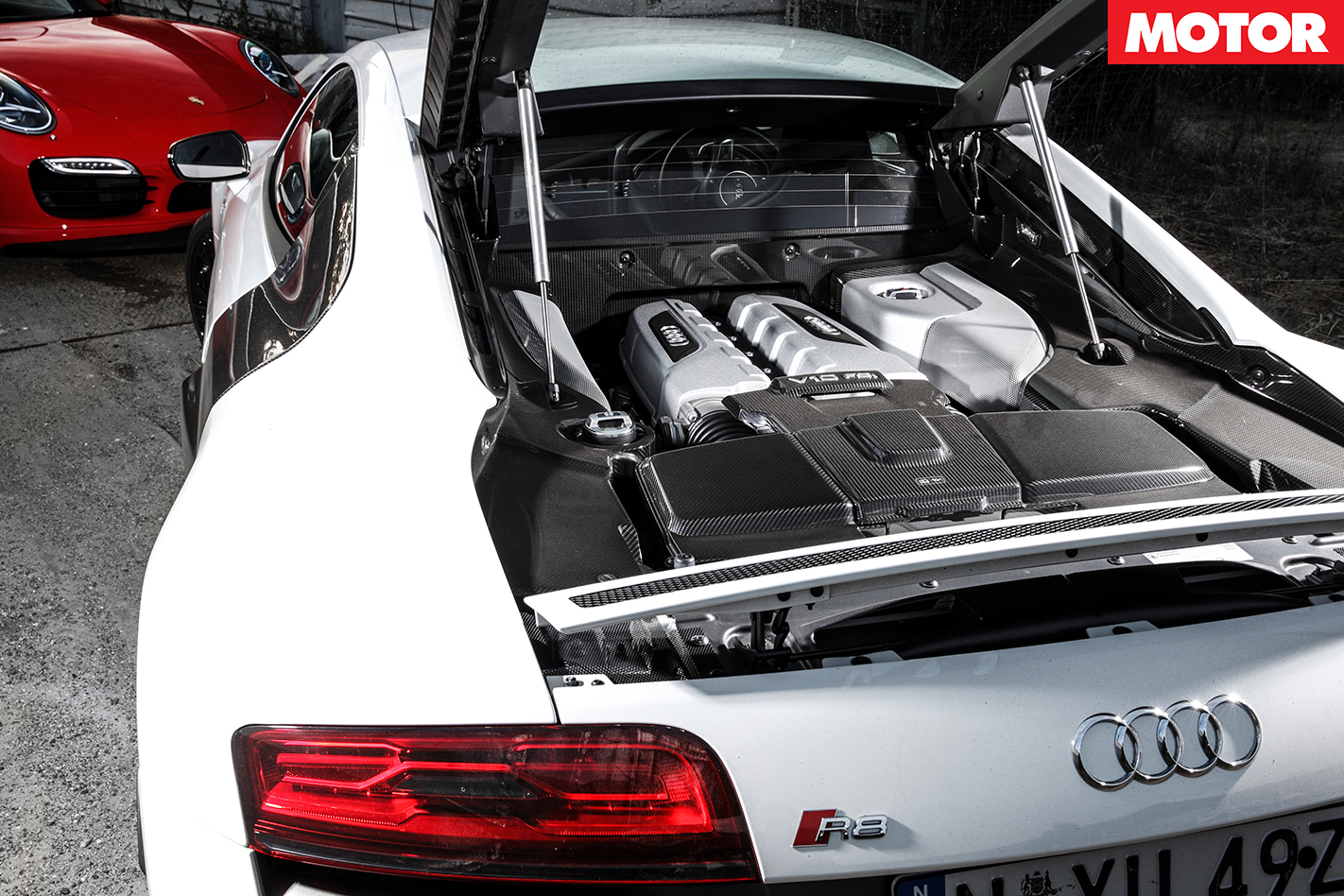
It gets even better when you hit the ‘Sport’ button. The R8 spares you of the bamboozling buffet of electronic settings you’ll find in other modern performance cars. The damper rate is fixed and so is the steering weighting (unlike, say, an RS5). You press ‘Sport’. And go.
The effect is something like, imagine you could plug your brain and nervous system directly into the car’s engine, like something out of the Matrix, so that you were physically connected to the car beyond just sitting in it. That’s what it’s like to drive an R8 V10 fast – particularly with the new, dual-clutch S-tronic ’box.
Within reason, the new transmission will obey your every command. You want to kiss the 8600rpm limiter? Sure. You want another gear? Pluck the right-hand paddle with a solid click and in imperceptible milliseconds, the revs have dropped, another gear is ready and, your foot buried in the carpet, you continue roaring forward on an uninterrupted wave of thrust.
The accuracy of the engine and gearbox is incredible, as if Audi outsourced their design and manufacture to a precision watchmaker. For theatre, for sheer driver entertainment, the R8’s engine and gearbox make it a more spectacular car than the 911 Turbo. The R8 is also more playful, and much easier to find its limit.
Up comes a corner in the R8. You are going rather fast, yes, but you can trust the brake pedal. You’ll never feel brakes with the bite and power as those on the Plus. Enormous six-pot front calipers clamp 380mm carbon-ceramic discs.
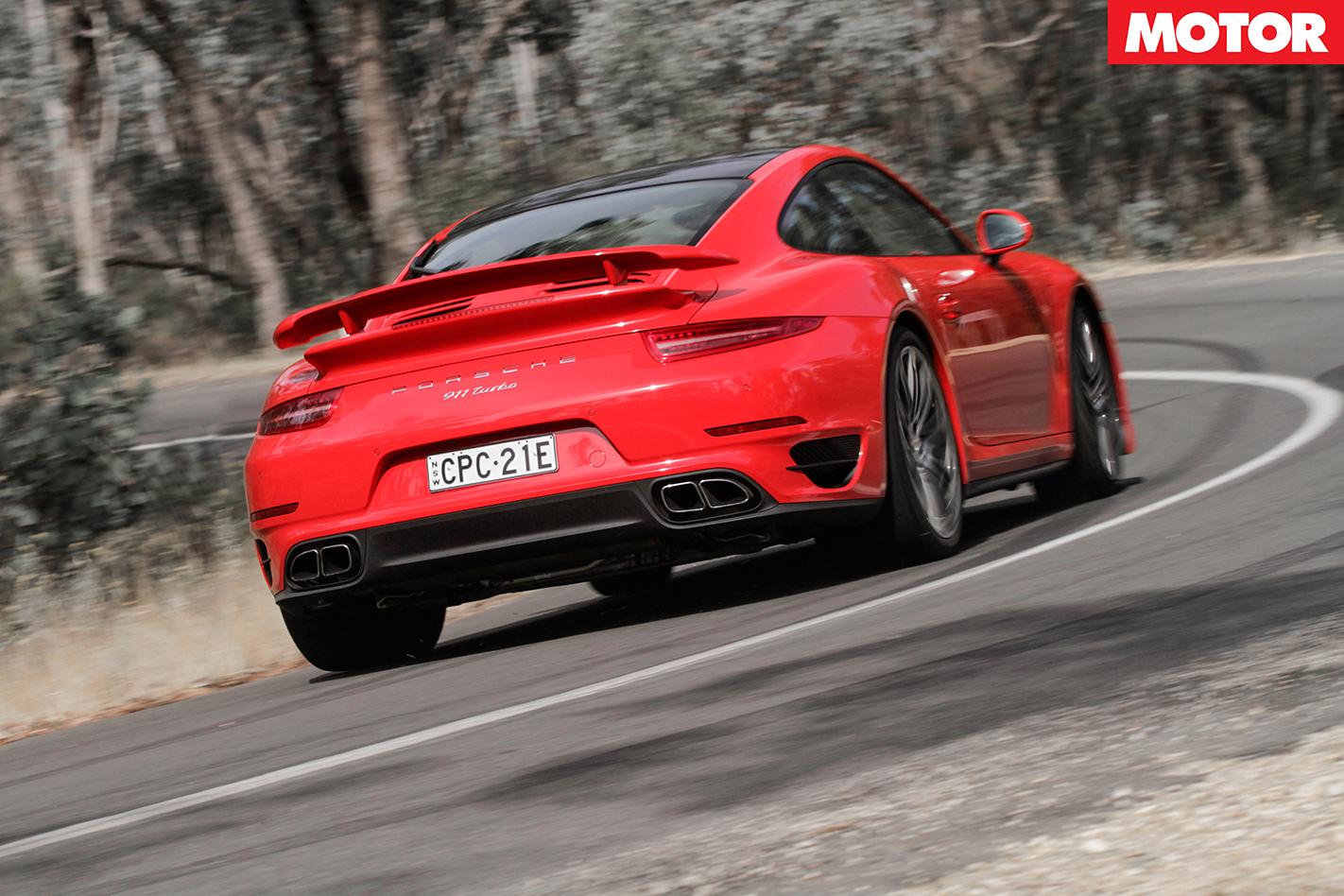
Pluck down gears, the V10 barking crisply as it blips with each downchange, and tip in. Immediately, you notice plenty of feedback through the wheel, and plenty of grip and point, but the rack could be faster; in the really tight stuff, you have to shuffle your hands around the wheel a bit. It’s 3.2 turns lock-to-lock – fairly slow by today’s standards.
Go too fast and you’ll feel the R8’s front wheels giving up a little easier than you might have first expected, too, particularly if you’ve just stepped out of a 911 Turbo. It will understeer and, if you’ve really overcooked it, almost surprisingly badly.
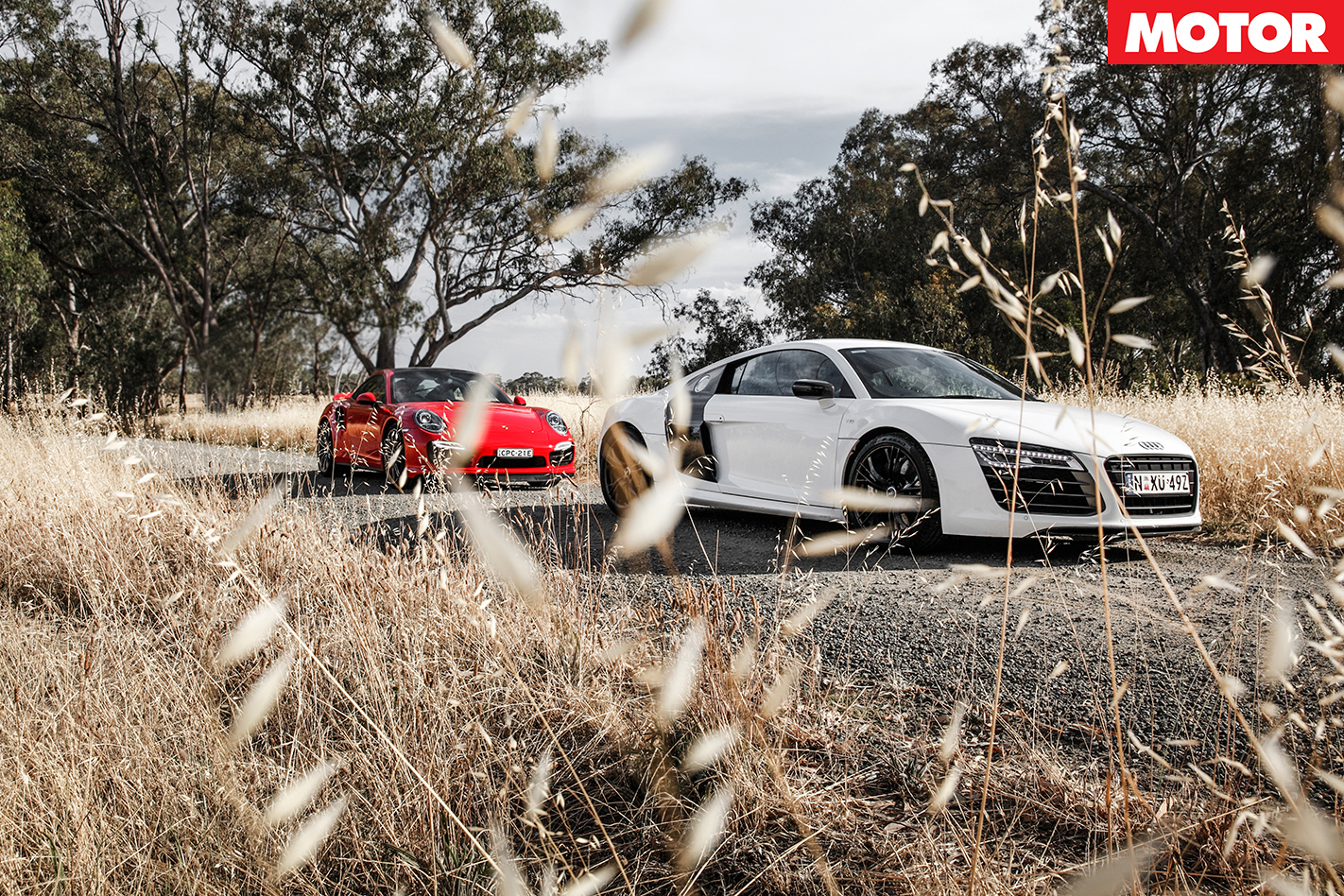
Where the Turbo demands focus and attention because of the lunatic speed you’re travelling, the R8 needs your concentration because its handling seems more affected by the physics of having the engine in the middle, challenging you to find ways around the understeer.
It dares you to stay on the brake while turning, to encourage a little more front bite, and in the ballsy, faster corners (like at Broadford, when we were there for PCOTY) it tests your patience on the throttle.
Get greedy on the gas and you’ll lift the R8’s nose, causing push. Likewise, if you’re greedy on the brake on corner entry, the R8 will very quickly try to swap ends on you in traditional midship-style.

So, say you hide a strange, unfulfilled curiosity to try motorcycling but are put off by the danger. You have $408K to blow and a spare spot in your garage. You own a second car that’s quiet, rides softly, in which you could commute to work, road-trip, and with a boot that inspires IKEA visits. If this is you, take the R8.
Save it for sunny weekends. It’s dramatic to look at, stunningly engaging to drive, stupidly fast, loud, theatrical, bewitching. It’s two Yamaha R1s stitched together, with a roof and two seats. You’ll flog it up a mountain road, get to the top, climb out and, hands trembling, suddenly want a cigarette, even if you don’t smoke.
But, like a sports bike, it’s not entirely comfortable, or practical, and its interior is modestly-appointed for a $408K car. You lock it in the garage, save it for weekends and commute to work in your other, more comfortable car.
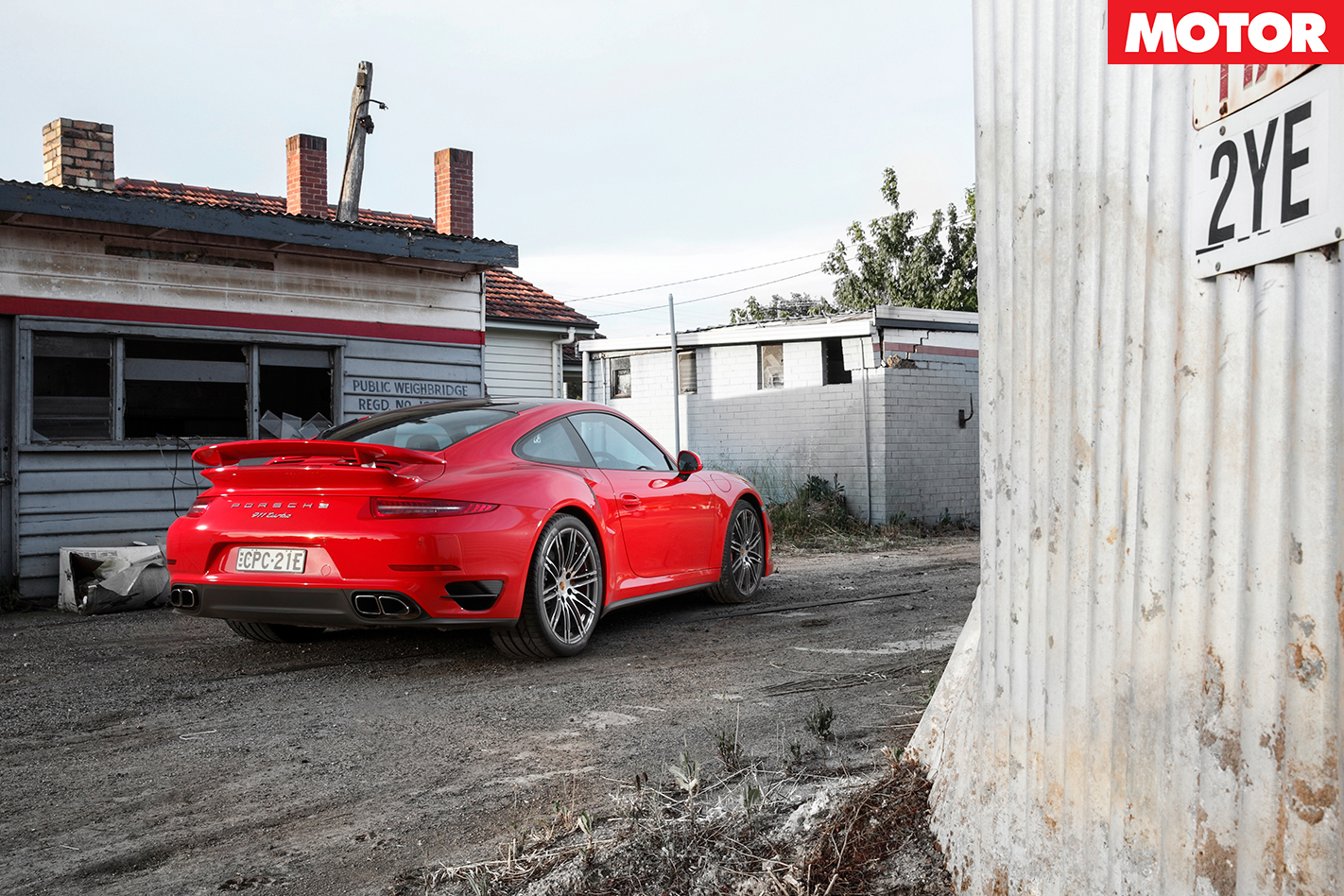
It’ll force you to become a better driver just so you might, one day, have the courage to turn the ESP all the way off and dance near its supremely impressive limits. It’s genuinely pleasant enough for daily use. It’s also $48K cheaper than the R8.
And while you must – must! – drive an R8 V10 before you die, it’s more important you experience the 911 Turbo’s launch control. It’s utterly otherworldly. You’ll be changed.

